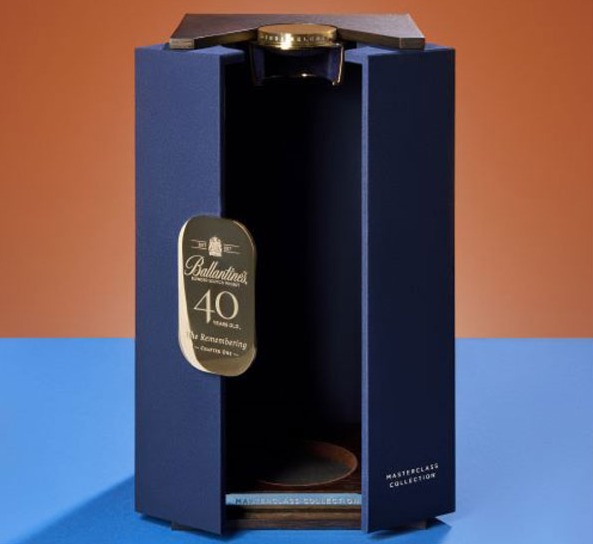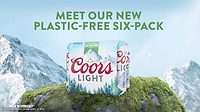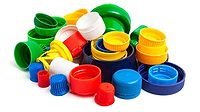Sustainability trends prompt secondary packaging innovations
Renewable, recyclable and biodegradable materials trend upward

Image courtesy of IPL Packaging
Recognized for her prolific work across film and TV, award-winning costume designer Colleen Atwood is quoted for saying, “Costumes are the first impression that you have of the character before they open their mouth — it really does establish who they are.”
In the beverage industry, although visual appeal is important in packaging, the materials used in secondary packaging has evolved to include factors such as sustainability, functionality and durability.
LB Odendaal, head of design and innovation for IPL Packaging, Santa Barbara, CA, notes that there’s been a shift toward more sustainable materials like corrugated cardboard and molded pulp, replacing traditional plastic wraps in secondary packaging.
“There is also a trend toward innovative designs that enhance shelf appeal and consumer convenience,” he says. “Multi-pack and flat-pack solutions that are easy to transport and store have become popular, as well as packaging that enhances product protection during transportation.”
Odendaal also notes the continued progress in digital printing technology, which has allowed for ever more vibrant and customizable packaging designs.
“Additionally, the rise in luxury packaging for premium beverage brands reflects a focus on high-quality, aesthetically pleasing designs that elevate the consumer experience,” Odendaal says. “Environmental regulations have also influenced these evolutions as companies adapt to meet legal requirements for sustainability.
“Creative, sustainable designs that capture consumer interest while fulfilling functional needs are becoming the norm, demonstrating that sustainable packaging can be both exciting and effective,” he continues.
Further, with consumer preferences for convenience, customization and transparency, comes the growing demand for recyclable, reusable packaging solutions, as well as designs that enhance user experience, Odenaal says.
“Personalization and smart packaging (which includes QR codes and NFC technology) are becoming popular ways to engage consumers and provide product information,” he explains. “Additionally, there is an increasing expectation for brands to demonstrate their commitment to sustainability through their packaging choices.
“Creative and innovative packaging solutions that align with sustainable practices are now more appealing to consumers, debunking the myth that sustainable packaging is bland and boring, far from it in fact,” he continues.
Yet, durability increasingly has become another factor impacting secondary packaging, especially with the rise of eCommerce, Odenaal says.
“With the increased need for direct-to-consumer shipping, packaging must now prioritize durability and protection to withstand the rigors of shipping,” he explains. “This has led to the use of sturdier materials and more secure packaging designs.
“Brands are also exploring packaging that enhances the unboxing experience, as it plays a crucial role in consumer satisfaction and brand perception in the eCommerce space,” Odenaal continues. “Additionally, luxury packaging is gaining importance as it not only protects the product but also enhances the overall consumer experience, reflecting the brand’s premium image.”
Sustainability dominates the market
Although the industry remains focused on innovative solutions that deliver on durability, functionality and aesthetics, Odenaal notes that sustainability continues to be a major driver in secondary packaging trends internationally.
“At IPL Packaging, we continue to see an increasing emphasis on the use of eco-friendly materials and reduction of carbon/environmental footprints,” he says. “Companies are moving toward recyclable, biodegradable and compostable materials, and adopting designs that minimize material usage.

“Innovations include lightweight packaging, using renewable resources, designing for secondary use, and incorporating post-consumer recycled content,” Odenaal continues. “The goal is to balance functionality, aesthetics and environmental responsibility.”
Additionally, with stringent environmental regulations pushing companies to adopt sustainable practices and materials, Odenaal notes that the scope of opportunity and innovation for sustainable packaging has multiple dimensions.
“Though renewable, recyclable and biodegradable materials all contribute to a better carbon footprint product, those involved in the packing design process, should (as part of the holistic process) also look beyond the features and functionality of a product to consider its raw materials, manufacturing process and transportation efficiencies in order to identify sustainable opportunities in all of these areas,” he explains.
Odenaal also suggests that beverage-makers should prioritize sustainability, considering materials that are recyclable or biodegradable.
“It’s crucial to evaluate the entire lifecycle of the packaging, from production to disposal,” he explains. “They should also focus on the functionality of the packaging, ensuring it protects the product and enhances the consumer experience.
“Collaborating with packaging experts, like IPL Packaging, to create innovative, cost-effective solutions that align with brand values and consumer expectations is also advisable,” he continues. “Additionally, considering the logistics and storage requirements will help in choosing the most suitable packaging type.”
Odenaal further suggests that beverage-makers should remain informed about environmental regulations, ensuring that packaging complies with standards to avoid legal repercussions while appealing to eco-conscious consumers.
“Adopting creative and sustainable packaging solutions can make the product stand out on the shelf while meeting sustainability goals,” he concludes.
Looking for a reprint of this article?
From high-res PDFs to custom plaques, order your copy today!







